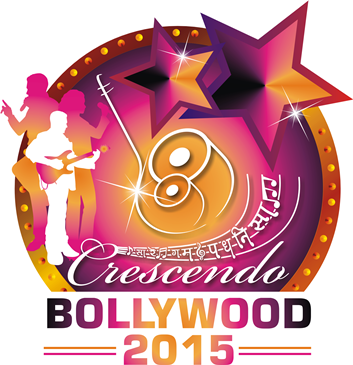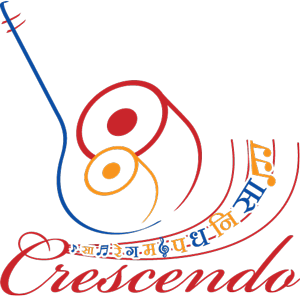Gharanas of Tabla - by Chaitanya Kunte
India has a rich and long tradition of music through the ages. In ancient times, when students were not allowed to write down the knowledge and there was no printing technology, the art was preserved by oral tradition, with use of strong memory, concentration and practicing for years. The art was carried forward to generation by the lineage of masters, usually with the inheritance of sons or disciples. The Guru or mentor hands over all of the knowledge and art to his son or disciple keeping in mind the pupil's capacity and temperament. From the hundreds of students a few disciples can become a performer and fewer can blossom in becoming creative artiste who can really maintain the tradition and further hand over their knowledge to next generations. So, the knowledge, performing wisdom and stylistic nuances were treated as rules and regulations; they were practiced religiously with a feeling of devotion and pride. In this way, various schools or scholastic traditions took shape and they were called as Gharana. A mature creative artist, after having mastery on a specific style or Gharana, may imbibe the techniques or aesthetics of other Gharanas or can create his own style. After having 3-4 generations of his disciples, it might get a status of a new Gharana. Usually the Gharanas are labeled with the names of villages or town from where the original master used to belong or reside.
There are two major playing styles (Baaj) in Tabla - a. Band Baaj & b. Khula Baaj
a. Banda Baaj: Banda literary means closed, so in this style, the resonance or sound from the right side (Daya/Tabla) is controlled or subdued. As the resonance is limited, sound after a stroke vanishes quickly and so, another stroke is made; which culminates into the increase in the speed. In the Banda Baaj, Tabla is more played on Chaati (the border side) and the sound from Baya (Dugga) is also controlled. In short, in the Banda Baaj, the importance is given to sound of Tabla and speedy progrations.
b. Khulaa Baaj: Khulaa literary means open. This is exactly opposite to the Banda Baaj. In this style, one can find a clear influence of Pakhawaj, the proto-type of Tabla. The Pakhawaj uses the open, resonant sound with full palm and fingers. In this style, the speed is not given much importance, on the contrary, the tonal richness and resonance is essential. In this style, the Daya (Tabla) is played more on Maidan (the middle portion) with the resonance of Baya (Dugga).
With these two basic styles, later some Gharanas of Tabla were developed, namely Delhi, Lucknow, Ajrada, Farukhabad, Benaras and Punjab. These Gharanas have their own area of expertise as well as commonalities. Many great masters in the last century have contributed in shaping these Gharanas of Tabla.
1. Delhi Gharana: This is the first and fundamental Gharana of Tabla. Ustad Sidhhar Khan Dhadhi was the founder of this Gharana. He was born in circa 1700 and after learning the Pakhawaj, started experimenting on Tabla. He also composed several compositions especially for Tabla playing. He improved the technique of playing on Chaati, glides from Dugga which made the Tabla as a popular accompanying instrument for Khayal singing. As this Gharana gave importance to playing on Chaati with two fingers, it is also called Do Ungaliyon Ka Baaj. Peshkaar, Kayda, Rela is the specialty of this Gharana. The Kayda played in this Gharana is usually in Chatusra Jaati in which the syllables are 'Dhit, Kit, tiT, Dhaage, Naage, Kinaa, Tinaa, DhirDhir'. While playing Tabla in speed, the sound is delightful and subtle. This Gharana is famous for solo playing as well as accompaniment. The masters of this Gharana are Sidhhar Khan, Ghasit Khan, Kallu Khan, Munir Khan, Nikhil Ghosh, etc.
2. Lucknow Gharana: The art of solo Tabla playing was born in Delhi, it got popularity quickly in surrounding area and came to the nearby city of Lucknow. By that time, Lucknow was immerging as an abode of music and various artists migrated to Lucknow from Rampur, Jaipur, Delhi, etc. In this city, there were many Thumari singers, Kathak dancers to whom the Pakhawaj was not a suitable percussion instrument and so the Tabla got the special seat. So, Tabla players migrated from Delhi Gharana and changed some playing technique and adapted it for Kathak and Thumari. Asafuddoullah, the Nawab of Lakhnow, gave patronage to the nephews of Ust Sidhhar Khan, Ust. Modau khan and Miya Bakshu Khan. They tried to convert the Khula Baaj of Pakhawaj into Tabla and composed many of such compositions with Banda Baaj that would suit Kathak. In this Gharana, the Gat, Paran, Tukda are the major compositions with the syllables such as 'Tagenna, DhetDhet, KadDhet, Titakit, Dhetta, Ghidnag'. This Gharana is also called 'Purab Baaj' or 'Khulaa Baaj'. Ust Abid Hussain Khan, Munne Khan, Pandit Biru Mishra were celebrated artists of this Gharana.
3. Ajrada Gharana: There is a small village called Ajrada in Merath district of Uttar Pradesh. Ust Miru Khan and Ust Kallu Khan settled in Ajrada. These two Tabla players were disciples of Sitaab Khan (disciple of Bugra Khan, the son of Sidhhar Khan who was founder of Delhi Gharana), so their basic style was like the Delhi Gharana. Further these two brothers, who were very rigorous in practicing, started improvisation of Aad Laya and syncopation which turned the simple Delhi gharana into a complex and tricky style. They composed Tishra Jaati Kayda and complex Kaydas with the use of syllables such as 'Ghitak, Dhigan, Tit, Kat'. They also applied the use of third finger, playing on 'Siyahi' (the black portion on the centre of Tabla) and technique of 'Ghissa' on Dugga. The important artists of this Gharana were Habibuddin Khan and Shamsuddin Khan.
4. Farukhabad Gharana: Ust Haji Vilayat Khan (son in law of Bakshu Khan of Lucknow Gharana) was the founder of this Gharana. Ustad Bakshu Khan gave extensive training to Haji Vilayat Khan and also made him his son in law. At the wedding ceremony, Ustad Bakshu Khan gave nearly 500 compositions of Tabla to Haji Vilayat Khan as gift and these compositions are known as 'Dahej Gat-s'. Haji Vilayat Khan went back to his hometown, Farukhabad after marriage thus creating the Farukhabad Gharana. Ustad Haji was a great performer, composer as well as teacher. Celebrated Tabla players such as Ahmadjan Thirkawa, Amir Hussain Khan, Lalji Gokhale, Sabir Khan, etc belong to Farukhabad Gharana. The influence of this Gharana is widely spread in Maharashtra, Bengal, Hyderabad, Indore, etc places. One can find blend of open sound like Pakhawaj as in Lakhnow Gharana as well as the speed of Delhi Gharana. Peshkar, Kayda, Rela and Gat-Toda are the specialty of this Gharana. Use of syllables 'Tak Tak, Dhir Dhir' is common and 'Kdaan, Ghidaan, DhiDhir KiTatak, Dhetta, NagaNaga' are the frequent syllables.
5. Benaras Gharana: This Gharana emerged around 200 years ago and was founded Pandit Ram Sahai, disciple of Ustad Bhodu Khan of Lakhnow Gharana. Once there was a concert arranged by Asafuddaula, Nawab of Lakhnow, in which Pandit Sharada Sahai was going to perform with his young nephew, Ram Sahai. During the concert Bhodu Khan observed that Ram Sahai was a very keenly interested student of music and had good understanding and concentration. He decided to teach Ram Sahai and gave him all of his knowledge with compassion like his own son. After completing the training for 12 years, he returned to Benaras and started performing with great dynamism. Once an old musician commented that "Thanks to Lucknow Gharana we are fortunate to listen to good Tabla playing". This hearted Ram Sahai and he left Tabla playing for nearly six months after which he developed a new style of his own musing which is well known as 'Banaras Gharana'. There is a clear impact of Pakhawaj in this Gharana, also the Laggi-Baaj while accompanying with Thumari is a specialty. Tabla is played with four fingers and strokes are given on Chaati as well as Siyahi with equal weight. In this Gharana, unlike other Gharanas, they start with faster compositions. Banaras Gharana has amalgamated the major aesthetic values from other Gharanas, such as Peshkar is from Delhi Gharana and Kayada from Lakhnow Gharana. Tabla players of this Gharana sit in Weeraasan posture while playing with Dugga in the lap and Tabla in front. This combines Khula Baaj and Banda Baaj very effectively with use of 'DhirDhirKit, DHigDhinaa, DhitKit, GheGhenaga, KataGadigan' syllables. Playing TeenTaal in superfast tempo is a area of expertise of this Gharana. Most of the followers of Banaras Gharana are Hindu and so they believe that percussion is originated by Lord Shiva and they have composed several 'Stuti-Paran', i.e. compositions in the praise of Gods and Goddesses. Major Tabla players of Benaras Gharana are Pandit Ram Sahai, Kanthe Maharaj, Samta Prasad, Kishan Maharaj, etc.
6. Punjab Gharana: This Gharana is born out of Pakhawaj tradition in Punjab and is separated from the influence of Delhi or Lucknow Gharana. The founder of this Gharana, Pandit Lala Bhavani Das Pakhawaji was contemporary to Ustad Sidhhar Khan, founder of Delhi Gharana. He was a fluent Pakhawaj player and was well versed in complex Layakaari (rhythmic designs). This Gharana uses the four fingers efficiently for playing Bandishs, which is one of its fortes. It has an influence of 'Thapiyaa Baaj', i.e. use of loud stroke on Daya with full palm of Pakhawaj. Tabla playing in this Gharana is speedy, complex and full of energy and so, it is very attractive and catches the mind of audience promptly. Peshkar is rarely played but Mishra Jati and Khand Jati Kayada and very complicated Bandish-s with frequent syllables such as 'Dhetta, Dhadanna, TakitTakit, Kradhetta, DhirDhirKat' are commonly rendered in this Gharana. Ustad Allarakha Khan, Zakir Hussain, Yogesh Samsi are eminent Tabla players of Punjab Gharana.



